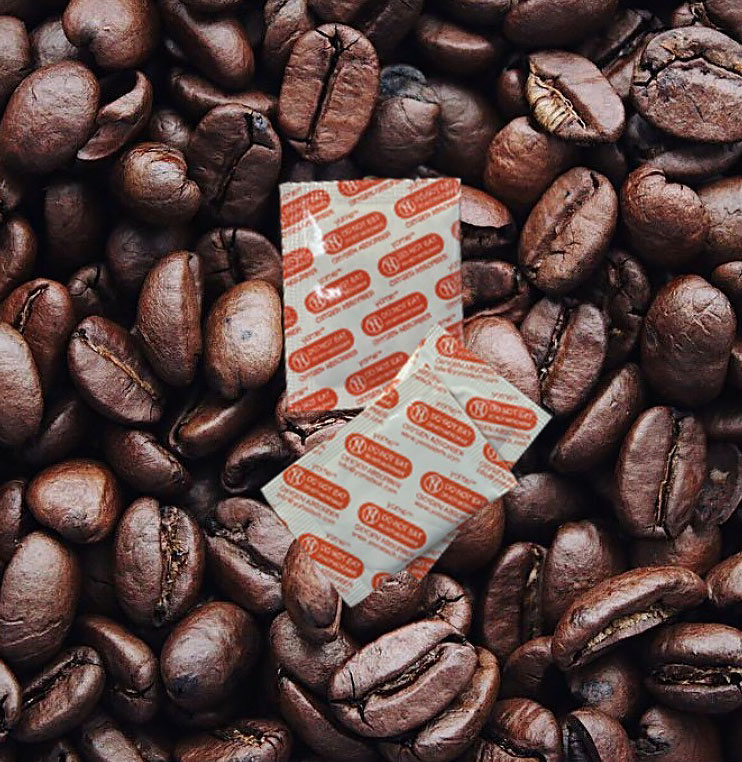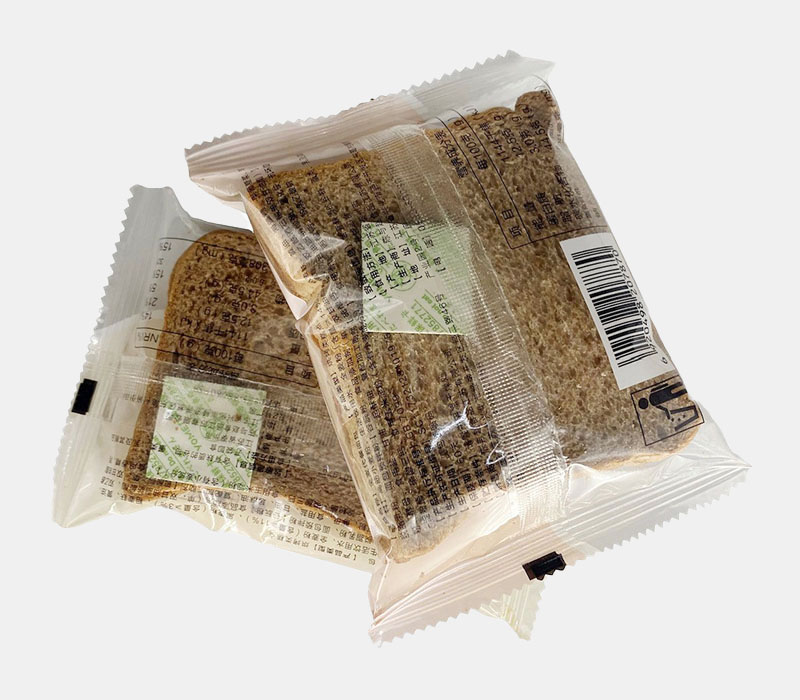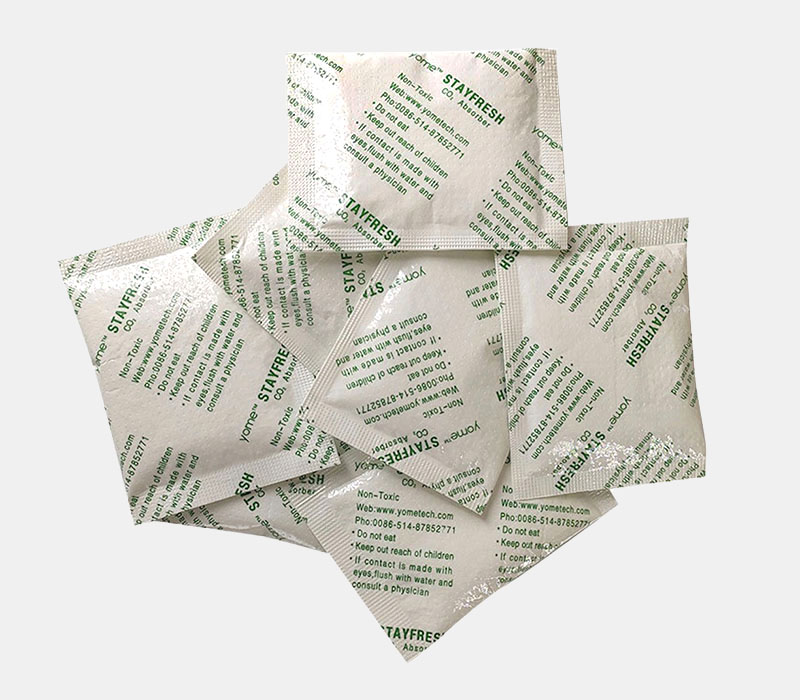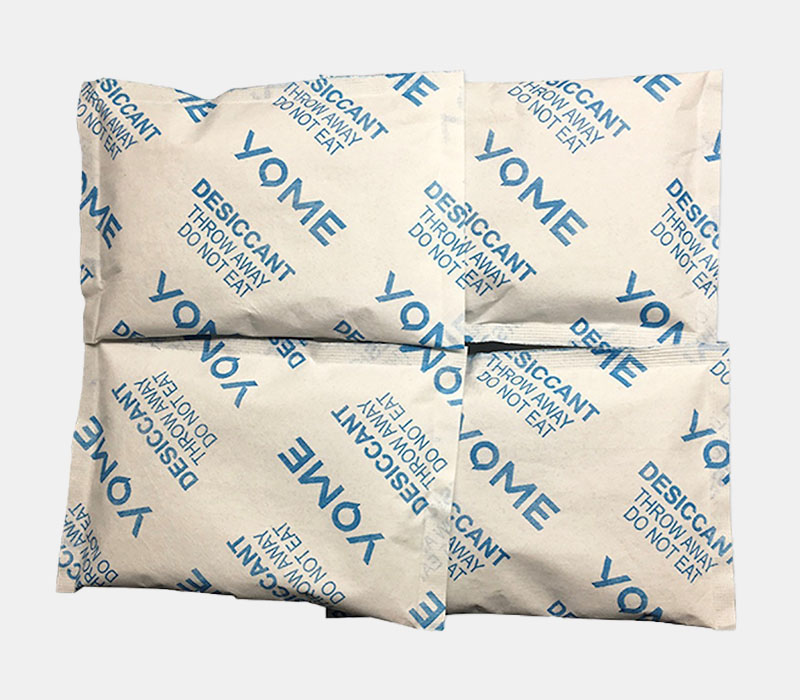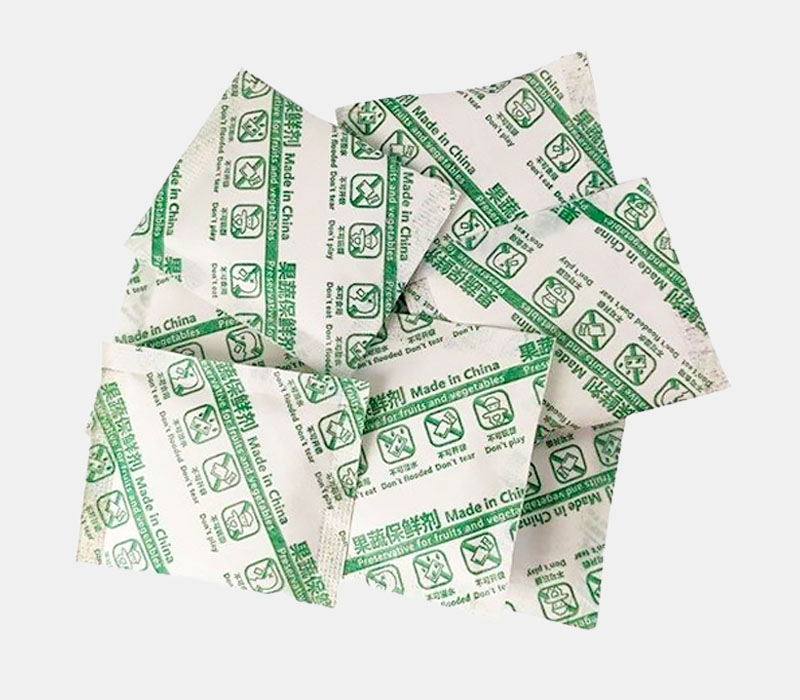Oxygen absorber
An oxygen absorber is commonly used in food and pharmaceutical packaging to remove oxygen, thereby extending shelf life, maintaining freshness, and preventing spoilage. Its primary functions include preventing oxidation to preserve color, flavor, and texture, inhibiting the growth of mold and aerobic bacteria, and extending the product’s overall shelf life. Additionally, it helps retain nutritional value by minimizing oxidation of sensitive nutrients like vitamins and fatty acids. Oxygen absorbers are especially effective in vacuum-sealed or airtight packaging, providing an optimal environment for preserving various products.
Alcohol fresh-keeping card
An alcohol fresh-keeping card is a preservation product typically used in food packaging to extend freshness and prevent spoilage by releasing alcohol vapors. These vapors help inhibit the growth of mold, bacteria, and other microorganisms, making it particularly useful for perishable items such as baked goods, fruits, and other moisture-sensitive products. The alcohol fresh-keeping card is usually placed inside the packaging, where it gradually releases alcohol in safe, controlled amounts to create a preservative effect, thereby helping to maintain product quality, taste, and shelf life without directly affecting the food.
CO₂ absorber
A CO₂ absorber is a product commonly used in packaging to maintain freshness by removing carbon dioxide gas from sealed environments. It is particularly useful for products like coffee, nuts, and other foods that can release CO₂ over time, which can cause spoilage, alter flavors, or affect texture. By absorbing excess CO₂, these absorbers help stabilize the internal atmosphere of the package, preventing bloating, preserving product quality, and extending shelf life. CO₂ absorbers are often placed inside packaging in small sachets and work alongside oxygen absorbers to create an optimal preservation environment.
Desiccant
A desiccant is a substance used to absorb moisture from the surrounding environment, helping to maintain dryness and prevent damage caused by humidity. Commonly found in small packets within packaging, desiccants are often used to protect products like electronics, leather goods, pharmaceuticals, and food items from mold, corrosion, and degradation. The most common types of desiccants include silica gel, clay, and molecular sieves, each with unique moisture-absorbing properties. By controlling humidity levels, desiccants help preserve product quality and extend shelf life.
Ethylene absorber
An ethylene absorber is a product used in packaging and storage to extend the freshness of fruits, vegetables, and flowers by removing ethylene gas from the surrounding environment. Ethylene is a natural plant hormone that promotes ripening; however, its accumulation can cause premature ripening, spoilage, and decay. By absorbing ethylene, these absorbers help slow down the ripening process, allowing produce to stay fresh for longer periods during transportation and storage. Ethylene absorbers are commonly used in the form of sachets or filters in produce packaging to maintain quality and reduce waste.

